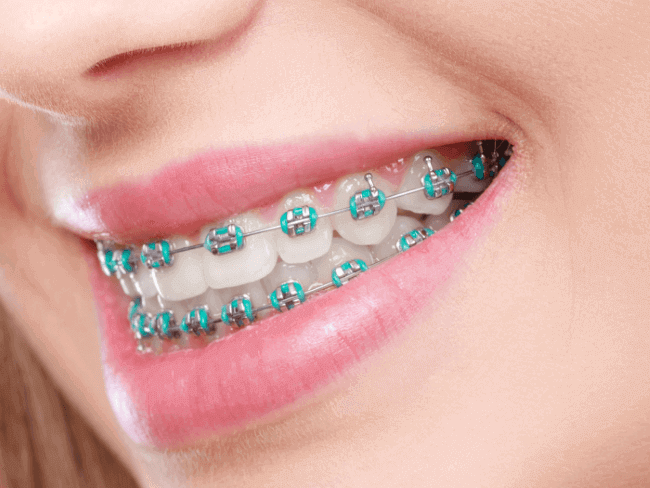
Teeth braces are orthodontic devices used to straighten and align teeth, correct bite issues, and improve overall dental health and appearance. They work by applying gentle, continuous pressure to move teeth gradually into their correct positions.
Why Braces Are Used
- Crooked or crowded teeth
- Overbite, underbite, crossbite, or open bite
- Gaps between teeth
- Jaw alignment issues
- To improve chewing, speaking, and oral hygiene
🔹 Types of Braces
- Metal Braces (Traditional)
- Made of stainless steel.
- Most noticeable but also strongest and most effective.
- Often used in children and teens.
- Ceramic Braces
- Tooth-colored or clear brackets.
- Less visible than metal, but more fragile and slightly more expensive.
- Lingual Braces
- Placed behind the teeth (tongue side).
- Virtually invisible, but harder to clean and may affect speech.
- Clear Aligners (e.g., Invisalign)
- Removable, transparent trays.
- Nearly invisible and convenient but may not be suitable for severe cases.
🔹 How Braces Work
- Brackets are attached to teeth.
- An archwire connects the brackets and provides pressure.
- Rubber bands or springs may be used to adjust force and direction.
- Adjustments are made every 4–8 weeks.
🔹 Treatment Duration
- Usually lasts 1 to 3 years, depending on the case.
- Followed by retainers to maintain results.
🔹 Care and Maintenance
- Brush and floss carefully, especially around brackets.
- Avoid sticky, hard, or chewy foods that can damage braces.
- Wear elastics or other appliances as directed by the orthodontist.
- Regular checkups and adjustments are necessary.
🔹 Common Side Effects
- Mild discomfort or soreness after adjustments.
- Mouth sores or irritation from brackets/wires.
- Difficulty chewing certain foods.
- Risk of plaque buildup or tooth staining if not cleaned properly.

